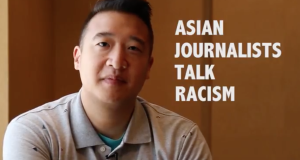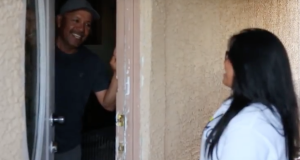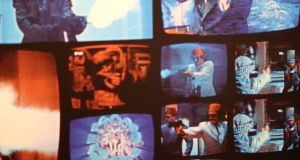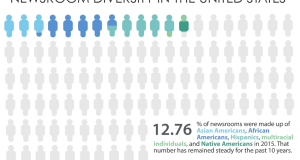Lament over staff and content cutting have been at the center of the media recession. In May, the Chicago Sun-Times fired its entire photo staff, letting go of veterans like Pulitzer Prize-winner John H. White. A month later, the Oregonian cut down its print edition to three times a week.
Belt-tightening has left newsroom diversity by the wayside, according to a study by the American Society of News Editors. Minority journalists already make up less than 13 percent of the daily newspaper workforce, and the dying breed of print advertising, coupled with internal hierarchical hurdles, have perpetuated the diversity deficit.
Without minority representation in the newsroom, stories about minorities and their communities could — and are — falling by the wayside. Given the context of the 2012 presidential elections in which minorities heavily comprised voter demographics, Wall Street Journal columnist Jeff Yang believes that without minority representation, the story of America will not accurately be portrayed.
In the next 10 years, Yang said, the U.S. will transition from a white majority to a majority-minority America.
“I even think the term ‘minority populations’ is already going to get overgrown and cliche,” Yang said. “We really are talking about successfully communicating with and telling the stories about America as it changes.”
Non-traditional outlets such as BuzzFeed and UpWorthy already are drawing massive click views while emphasizing diversity. Operating with a bottom-up approach where the writers — or more accurately, curators — choose which stories to feature and make viral, legacy media could learn from this crowd-sourced editorial approach.
But some argue that these non-traditional mediums aren’t held to the same journalistic standards as legacy media outlets such as The New York Times or The Washington Post. And there’s no guarantee those who work for such curators will gain the skills necessary to be hired at a traditional media outlet.
Paul Cheung, AAJA national president and global interactive editor for The Associated Press, said he emphasizes an applicant’s skillset over where he or she has worked.
“Whether I’m recruiting or not, it’s a reporter asking the question, ‘What is it they’re doing for BuzzFeed? How are they thinking differently? And does that match what AP is looking for?’” Cheung said. “So the way I look at it is, what is it they’re doing differently from AP, and do we need that skillset? And could that candidate be really specific about what they could add to the AP or whomever you’re working for? You have to make it relevant to them.”
Part of the obstacle is cultivating and keeping minority journalists in leadership positions. The ASNE study found that 90 percent of newsroom executives surveyed were white at a time when non-whites account for roughly 37 percent of the U.S. population.
Richard Lui, co-anchor on MSNBC’s “Jansing & Co.,” says it’s a battle between what the industry supplies and what it demands.
Minority communities may not have enough trained leaders to fill in the gaps due to attrition.
“When you see the attrition rate, you’re not going to see as many at that high level,” Lui said. “So it’s a supply/pipeline question. Then there’s the demand question. I don’t know the answer to either of those necessarily.”
 VOICES Publishing from the AAJA National Convention
VOICES Publishing from the AAJA National Convention







